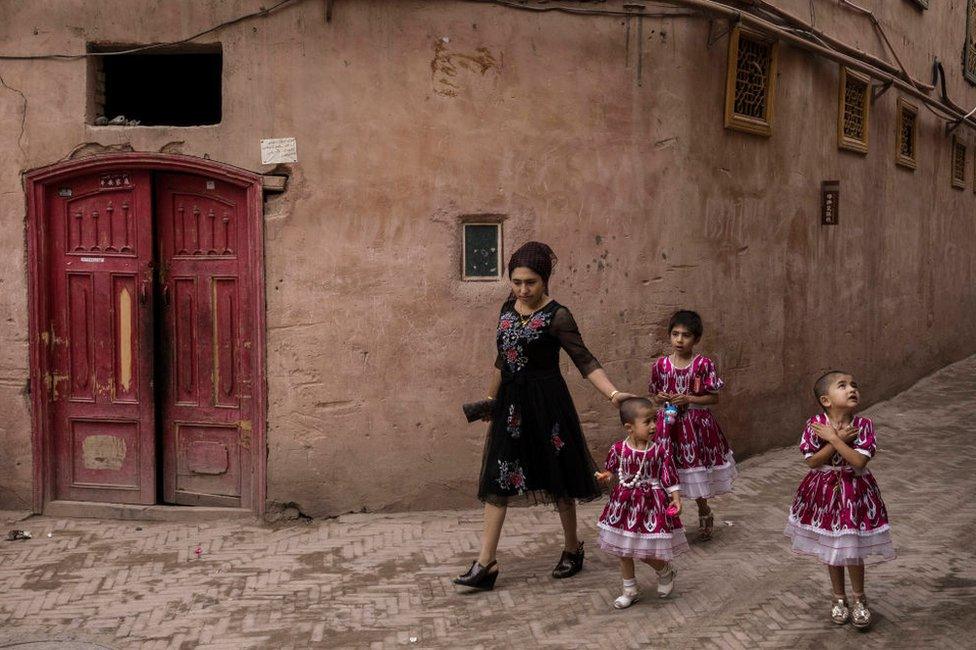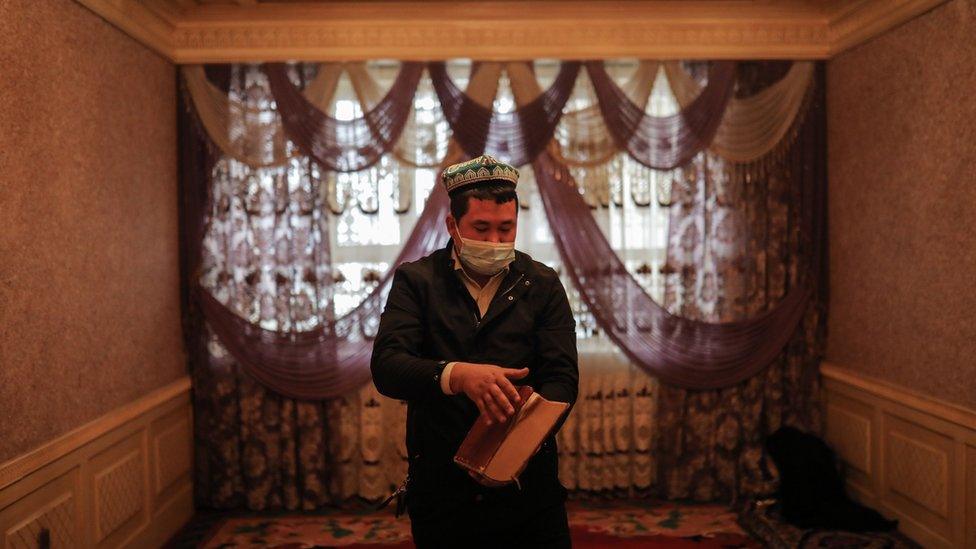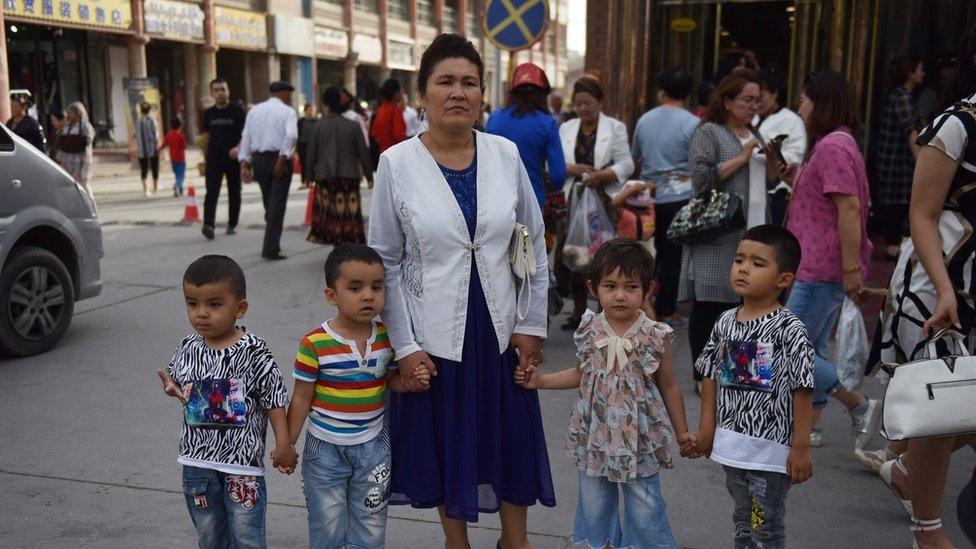Chinese birth-control policy could cut millions of Uyghur births, report finds
- Published

A woman walks through the old town of Kashgar in Xinjiang, where China is accused of suppressing ethnic birth rates
Chinese birth-control policies could reduce the ethnic minority population in southern Xinjiang by up to a third over the next 20 years, according to new analysis by a German researcher.
The analysis concluded that regional policies could cut between 2.6 and 4.5 million minority births in that time.
China has been accused by some Western nations of genocide in Xinjiang, partly through forced birth-control measures.
China denies the allegations, saying birth-rate declines have other causes.
The new study, by researcher Adrian Zenz, is the first such peer-reviewed academic paper on the long-term population impact of China's crackdown on the Uyghurs and other minority groups in Xinjiang.
It found that under China's birth-control policies in the region, the population of ethnic minorities in southern Xinjiang would reach somewhere between 8.6 and 10.5 million by 2040, compared to 13.1 million projected by Chinese researchers before Beijing's crackdown.
"This [research and analysis] really shows the intent behind the Chinese government's long-term plan for the Uyghur population," Mr Zenz told the Reuters news agency, which first reported the study, external.
In his report, Mr Zenz writes that by 2019 Xinjiang authorities "planned to subject at least 80% of women of childbearing age in the rural southern four minority prefectures to intrusive birth prevention surgeries, referring to IUDs or sterilisations".
Sharp decline
Experts believe that China has detained at least a million Uyghurs and other Muslims in Xinjiang, and the government faces accusations of attempting to reduce and assimilate the minority Muslim population there.
Reports also say authorities have intentionally moved people from the mainstream Han Chinese population into parts of Xinjiang previously dominated by ethnic minorities, and forcibly transferred Uyghurs out.
According to Mr Zenz's research, China's birth-control policies could increase the Han population in southern Xinjiang - where the Uyghur population is concentrated - from its current level of 8.4% to about 25% by 2040.
According to official Chinese statistics, there was a 48.7% decline in birth rates in ethnic minority areas of Xinjiang between 2017 and 2019.
China announced last week that it would allow couples to have up to three children, after census data showed a steep decline in national birth rates. But leaked documents and testimony from Xinjiang suggest an opposite policy is being pursued there, with women detained or otherwise punished for exceeding birth-control quotas.

The Chinese government is accused of attempting to reduce the Muslim population in Xinjiang
A previous report by Mr Zenz based on regional data, policy documents and testimony alleged that pregnant Uyghur women in Xinjiang were being threatened with internment for refusing to abort pregnancies, while others were involuntarily fitted with intra-uterine devices or coerced into sterilisation surgery.
China denies making any attempt to reduce the Uyghur population specifically, arguing that the decline in minority birth rates in Xinjiang is due to the implementation of general birth quotas in the region as well as increases in income and better access to family planning.
"The so-called 'genocide' in Xinjiang is pure nonsense," China's Foreign Ministry told Reuters in a statement.
"It is a manifestation of the ulterior motives of anti-China forces in the United States and the West and the manifestation of those who suffer from Sinophobia."
Mr Zenz is a researcher at the Victims of Communism Memorial Foundation, a Washington DC-based "anti-communist" organisation which describes itself as dedicated to "pursuing the freedom of those still living under totalitarian regimes".
Reuters said it had shared his new research and methodology with more than a dozen experts in population analysis, birth prevention policies and international human rights law, who told the news agency the analysis and conclusions were sound.
Some of the experts cautioned that demographic projections over a period of decades can be affected by unforeseen factors.
Related topics
- Published4 June 2021

- Published31 May 2021

- Published29 June 2020
